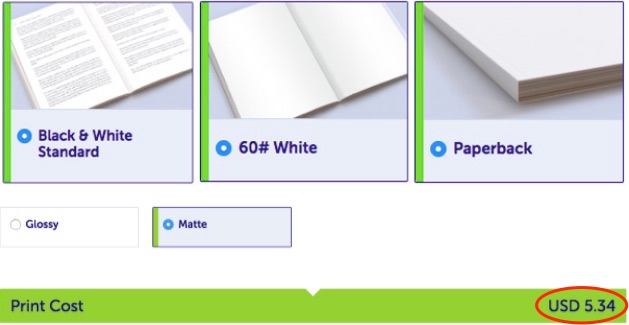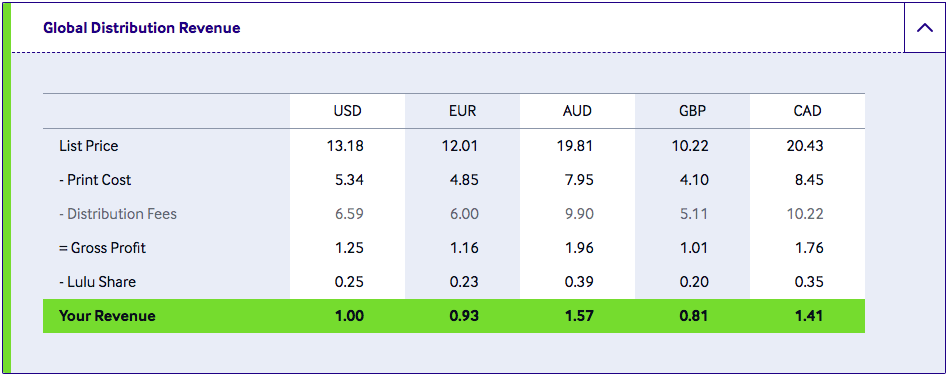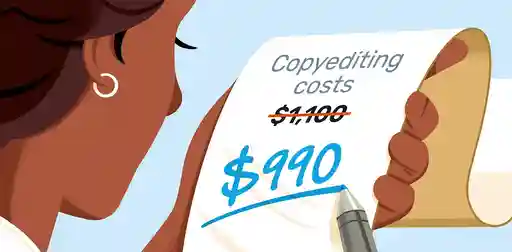Blog • Understanding Publishing
Posted on Apr 30, 2020
Lulu Publishing Review: READ THIS Before You Use Them!
Over the last two decades, Lulu has become one of the biggest self-pub platforms in the business. Lulu publishing, or “Lulu Press” as the company is now called, offers both print-on-demand and distribution services for books. And they're a popular choice among self-publishing authors for POD — in terms of notoriety, Lulu is right up there with KDP Print, BookBaby, and the other major print-on-demand players.
However, Lulu has also acquired a negative reputation for taking substantial cuts of author royalties, forcing many authors to either price their books ridiculously high or to receive no royalties at all. This may leave today's authors wondering: is publishing through Lulu Press even worth it?
To help you make the final call, we've reviewed all their services here, complete with costs, quality levels, and comparisons to similar companies. If you just want the TL;DR, feel free to jump to the end via the table of contents. Otherwise, let's jump right into the review.
Print-on-demand service
Rating: 4/5 stars ⭐⭐⭐⭐
We'll start Lulu's claim to fame: their print-on-demand service for print books, photo books, comic books, and more. As an author printing a “typical” book with few images, you can choose from the following customization options:
- Interior — premium color, premium black & white, standard color, or standard black & white
- Paper type — 60# cream, 60# white, or 80# coated white
- Book binding — coil, hardcover, paperback, or linen wrap
- Cover finish — glossy or matte
Note that hardcover is only available for books of 20 pages or more, and saddle stitch is only available for pamphlets. So if you upload a short PDF just to test Lulu's options, you may see saddle stitch instead of hardcover, but this will change once you upload your actual book.

Speaking of which, while the upload process only takes a minute, you will have to spend some time formatting your book beforehand. Lulu has very specific requirements for PDFs, as outlined on this page.
Though formatting your PDF according to these rules isn't a deal-breaking hassle, it does make things more complex than users might anticipate! We'd say Lulu's POD setup process is easier to navigate than that of the notoriously tough IngramSpark, but more difficult than using KDP Print. This knocks the overall POD experience down from five stars to four.
In any case, make sure to read through all those requirements before uploading your PDF and finalizing your design choices, and preview your book in full to confirm everything looks good. Then you're ready to fill out the rest of your project details and place your order!
Looking for an easy, FREE way to format your book for publication? The Reedsy Book Editor can help.
What about print quality and costs?
As you'll see once you finish designing your book, Lulu's printing costs depend on the materials you choose and the number of pages you have. For a 200-page book with B&W interior, lightweight pages, a paperback cover, and matte finish, Lulu estimates a print cost of $5.34 per unit:

For reference, if you choose hardcover instead, the cost rises to $12.30 per unit. With hardcover binding AND premium color interior, the print cost inflates to a whopping $27.50 per unit. Check out the table below to see how these print costs compare to other POD companies!
Printing costs notwithstanding, most authors seem pretty satisfied with the production quality of Lulu-printed books. They report high-resolution covers, thick pages, and well-aligned text that doesn’t bleed through. Note that a few users have noted lower-quality materials and longer shipping times with large orders, especially around the holidays.
But overall, the printing side of Lulu’s business holds up. It's certainly as good as, if not better than, most other POD services in terms of the final product. However, if you're really committed to getting high-quality print books, you should consider investing in offset printing instead.
Lulu POD service vs. other POD services
Curious how Lulu stacks up to KDP Print, IngramSpark, BookBaby, and Blurb in terms of print-on-demand? Consult this table to compare their POD services on user friendliness, print costs, product quality, and more.
| Lulu | KDP Print |
Ingram Spark |
BookBaby | Blurb | |
| Ease of setup | Medium | Easy | Hard | Easy | Easy |
| Offers hardcover? | Yes | No | Yes | Yes | Yes |
| Print cost per unit (with basic design) | $5.34 | $4.35 | $4.71 | N/A | $5.67 |
| Volume discount? | Yes | No | Yes | No | Yes |
| Shipping time | Average | Fast | Fast | Average | Average |
| Quality of final product | Good | Fair | Fair | Good | Very good |
Print book distribution
Rating: 2/5 stars ⭐⭐
Now let’s talk print book distribution. Lulu distributes print books to Amazon, Barnes & Noble, the Ingram network, and more, including its own Lulu Bookstore. All in all, this global distribution service reaches over 40,000 retailers around the world. But Lulu's extensive distribution network comes at a (literal) price: lower royalties.
There seems to be a lot of confusion over Lulu Press royalties, so allow us to clear some things up. Lulu doesn’t “steal” royalties from authors, as some reviews claim. However, they do intentionally obscure their pricing model on pages like this, claiming you’ll receive “80% of profits” from your printed book.
When you get into the nitty-gritty of pricing your book, you’ll realize that “80% of profits” doesn’t mean 80% of your sales. Rather, it’s 80% of the amount left after print costs and distribution fees (taken by Amazon and other retailers). The other 20% goes to Lulu. Here's what that looks like:

As a result, you’ll need to price your print book fairly high in order to make any money. For our 200-page paperback book, which is relatively short and made of basic materials, the list price to earn a single dollar per sale is $13.18 (see above). If we want to earn $5 per sale, the list price jumps up to $23.18, with the distribution fee increasing accordingly.
Another option is to distribute only to the Lulu Bookstore, which doesn’t incur any distribution fees. Still, you have to consider the negative impact of not listing your book on major retailers. You can promote your own Lulu listing, but nobody’s going to find it organically. On top of that, you can’t even run price promotions to attract readers, like you can on Amazon.
So why would anyone distribute through Lulu?
The key thing to remember is that you’re not really paying to “distribute through Lulu,” you’re paying to print with Lulu. And the printing and distribution plans are a package deal — it’s not like you can print with Lulu and then distribute through another company.
Also, to be fair, high distribution fees aren’t unique to Lulu. Other POD companies charge substantial “middleman fees” as well; BookBaby, for example, charges a flat fee of $399. KDP Print, IngramSpark, and Blurb recoup the cost through book sales, same as Lulu does.
But no other major print-on-demand company takes quite as much as Lulu. BookBaby and Blurb don't have user bases nearly as large, and KDP Print and IngramSpark both offer better expanded distribution plans and royalty shares than Lulu. That’s not even accounting for the fact that you can use KDP Print to distribute directly to Amazon — a market that’s obviously much more valuable than the Lulu Bookstore.
Lulu distribution vs. other print distribution services
Want to see exactly how these companies' print distribution services stack up? Check out this table comparing their costs and retailer networks. (Note that the distribution fee here also includes company commission, e.g. Lulu's 20% of your “gross profit”.)
| Lulu | KDP Print | IngramSpark | BookBaby | Blurb | |
| Setup fee | None | None | $49 | $399 | None |
| Distribution fee (as % of list price) | 50-65% | 40% for Amazon, 60% for others | Author’s choice* | Taken from setup fee | Author’s choice* |
| Direct distribution network (no distribution fee applied) | Lulu Bookstore | Amazon | None (no Ingram bookstore) | BookBaby Bookshop | Blurb Bookstore |
| Expanded distribution networks | All major retailers | All major retailers | All major retailers | All major retailers | All major retailers |
*Both IngramSpark and Blurb let authors give wholesale discounts to retailers. This allows retailers to acquire print titles for less, which lowers the resulting distribution fees.
Ebook creation and distribution
Rating: 1/5 stars ⭐
We won’t mince words here: there’s very little point to creating and distributing an ebook through Lulu publishing. The only reason you might consider doing so is if you’re already distributing the print version through Lulu and want to streamline the process for yourself.
Otherwise, it makes no sense to distribute your ebook via Lulu’s channels. Though there’s no printing cost, the distribution fees continue to apply, which means you’ll still have to set a high list price in order to make money. And in today’s cutthroat ebook market, most self-published ebooks over $2.99 simply aren’t going to sell.
It’s very easy to format your ebook without involving Lulu at all, and you can price it more competitively by going through an ebook-friendly aggregator like Draft2Digital or Smashwords. You can upload separately to each retailer if you want to save even more money!
Just don’t distribute ebooks through Lulu, or indeed any POD-focused company like BookBaby or IngramSpark — they're simply not designed with ebook authors in mind. (And KDP Print is merely the POD counterpart to Kindle Direct Publishing, which is actually a good place to start if you've never distributed an ebook before.)
Customer service
Rating: 3/5 stars ⭐⭐⭐

In terms of user support through the POD setup process, distribution, and help with printing and shipping issues, reports are mixed. The good news is that uploading your book for print-on-demand is so simple, it probably won't require support. The less-than-good news is that if you do need to get ahold of someone, it might be a little tricky.
Lulu Press does have a virtual “Help Center” with frequently asked questions, so if an issue comes up, you're likely to find the solution there. However, the answers to these questions can be a bit muddled. This is in part because some of them are quite complicated, but also because providing clearer explanations of their pricing model might cause Lulu to lose business.
Users who've managed to get ahold of Lulu reps say they're helpful and friendly, but it may take a long time for your issue to be resolved. As we mentioned re: print quality above, you may face additional problems if your order is larger and/or if you place it around a busy time like the holidays.
As for how their customer service compares to other POD companies', we'd say Lulu is about average. KDP Print can get similarly overwhelmed with requests from users, and IngramSpark's learning curve is so steep that most people end up struggling even with support.
If customer service is extremely important to you and you want to be guided through every step of printing your book on demand, choose BookBaby! Their setup process is as easy as Lulu's and support reps are extremely responsive. (However, do keep in mind that their flat-fee distribution system may not be ideal for you.)
Editing, design, and marketing services
Rating: N/A
Until recently, Lulu Press offered their own “in-house” services for editing, design, and marketing. These have now been replaced with a list of affiliates that provide similar services. However, upon close inspection, many of these companies are relatively new, inexperienced, and/or overcharge for the services they offer.
If you’re looking for a professional editor, designer, or marketer who’s experienced, qualified, and who will give you a fair quote, we have great news: you’re only a click away.

MEET THE BEST PUBLISHING PROFESSIONALS
Polish your book with expert help
Sign up to browse 2000+ experienced editors, designers, and marketers.
Should you choose Lulu Press?
Lulu produces fairly high-quality print books, but its distribution services leave a great deal to be desired. If you're only printing with them, you should be fine — but distributing your Lulu-printed books might get messy.
And if you’re still conflicted over whether or not to choose Lulu, here are our recommendations in the plainest terms possible!
✅ You should choose Lulu Press if:
- You want to order a small number of print books for yourself; and/or
- You’d like quality print books for your readers and don’t really care about profits.
That said, you can get even better quality printed books with Blurb, as long as you don't mind a slightly higher printing cost per unit. And if you really want to pull out all the stops, look into offset printing — there's a high upfront cost, as you have to order lots of copies at once, but the quality is unparalleled.
❌ You should not choose Lulu Press if:
- You want to actually make money through print book sales;
- You’re planning to distribute an ebook rather than a print book; and/or
- You’re in need of other services such as editing and design.
For some users, Lulu’s print production quality makes up for what it lacks in other areas. But we’d stress the importance of looking into all your POD options before committing — don’t go with Lulu just because they showed up when you Googled “publish a book”. By staying informed, you can ensure that you make the best print-on-demand decision for yourself, your readers, and, ultimately, your career as an author.
Reedsy rating: 1/5







